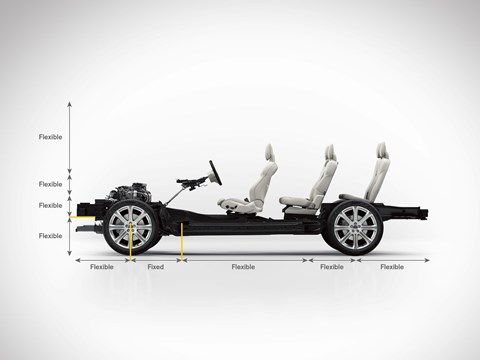► Interview with Volvo’s vice preseident of e-tech
► The future of Volvo technology explained
► Wireless charging, software updates and more
Dr Thomas Müller is Volvo’s vice president for electrics, electronics and e-propulsion, holder of a PhD in nuclear physics and ex-BMW infotainment boffin.
Here he exclusively gazes into his crystal ball for CAR magazine.
> Connectivity is the key to autonomous driving. From an HMI perspective it’s clear you need a safe and intuitive method of bringing the driver in and out of the control loop. In the near future we will not see cars without steering wheels, and people gazing out of the window. You will see autonomous driving on some roads, so how do we do the handover? If you’re going to allow people to read or browse the internet, maybe it’s via a programmable cockpit. So the car is in control and you’re checking your emails on the display. Two miles ahead of the handover there’s a notification. With 30 seconds to go the emails fade out and the driving instruments return.
> In the future there will be a great need for data exchange between multiple vehicles. You can buy static information from the mapping companies, and the cars will have sensors, but they will also need real-time dynamic data about what is happening on the electronic horizon. They need to be able to predict and to modify their driving ahead of time, as a good driver does. This collaboration between different vehicles won’t be easy – we are all competitors. Finding the right model for the exchange of anonymous data is key.
> Our cloud technology will improve the user experience. There’s potential for over-the-air active safety. If somewhere there is an emergency-braking situation, or grip is low, why not communicate that to the cloud and on to other cars in the area? Information from the cloud will also pre-condition a PHEV car in the right way to better deploy its available energy, using geo-fencing on zero-emission zones for example, so the car knows to preserve charge and to shut off the combustion engine.
> HMI took a big step when Apple introduced the iPhone. iDrive was the automotive equivalent of computers’ mouse and menu system. It worked because people understood the logic from their computers. Now consumers have learned touchscreen interaction from their smartphone. A touchscreen gives you two dimensions for control and more flexibility. The menu structure is much flatter too, more intuitive. The next stage is proximity sensing. In navigation the screen would show only the map, bringing in the menu and making the relevant part of it bigger as you reach for it, improving accuracy.
> People talk about a future battery electric car [Volvo will launch a mid-size BEV with a 325-mile range by 2019] and everybody talks about inductive [wireless] charging. The vision for this technology is very desirable, certainly in the premium segment. You arrive at your garage and step out, the car positions itself perfectly over the charging coil and that’s it, you’re charging, maybe while also downloading a software update. It’s possible but there are cost and safety issues. What if the car is charging and your cat walks between the car and the charger? It’s a very unfortunate situation!
